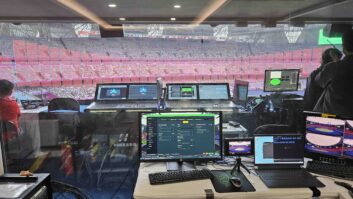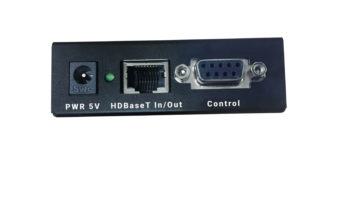
Get ready for major changes in the voice alarm market as a new European standard comes in to force early in the New Year. Neil Voce of Ateis gives an update.
EN 54 is the hottest topic in voice alarm right now. The standard comes into force in the UK in March 2011 and it will have a profound effect on the equipment that is used for voice alarm projects.
To date, manufacturers of voice alarm equipment have been able to simply state compliance to the regulations, in particular to BS 5839 Part 8. But, from here on, any piece of equipment being used in a voice alarm system will need to have been third-party certified to the EN 54 standard. That means EN 54 Part 4 for the power supplies, Part 16 for the voice alarm control and indicating equipment and Part 24 for loudspeakers. Furthermore, only a small select group of test houses have been accredited to offer these compliance certificates.
So we have already seen a feverish rash of activity from the major VA manufacturers, such as Ateis, Baldwin Boxall and Penton to get their products in line with the requirements. Whereas compliance to previous standards had focused primarily on system monitoring and indication, EN 54 includes environmental, humidity and vibration testing and requires whole systems, including the actual racks, to be certificated.
Ateis started working on EN 54 compliance a good while ago. The company took products along for initial inspections in 2009 and we have had to look carefully at how to meet some of the vibration testing and so on which we hadn’t previously experienced. Some of our products have had to be re-laid from a PCB level. Also, we have had to look carefully at which products needed to be put through the process because of the costs involved.
The costs are a serious issue. For a loudspeaker manufacturer offering 30 lines of VA speaker, there needs to be a business case for every speaker. This has led to industry fears that choices of loudspeaker will be restricted after the new standard is imposed and this may impact on the quality of systems in the future, although Penton, for example, have undertaken to push through a substantial range.
Without doubt, the new standard will change the way integrators provide systems. For example, a system certificated to EN 54 will state exactly the equipment cubicle that the system has been tested in as well as the battery manufacturer. In theory, if a suite of identical racks is provided in a central equipment room by a different, even if highly reputable, cabinet manufacturer, then the system installed in this alternative rack is not certificated.
Next year will bring a challenge for manufacturers, system designers and engineers and there will need to be a co-operative effort to meet this challenge led by those manufacturers who have already put in the work and the money to hold those valuable certificates.
Neil Voce is a director at Ateis UK







